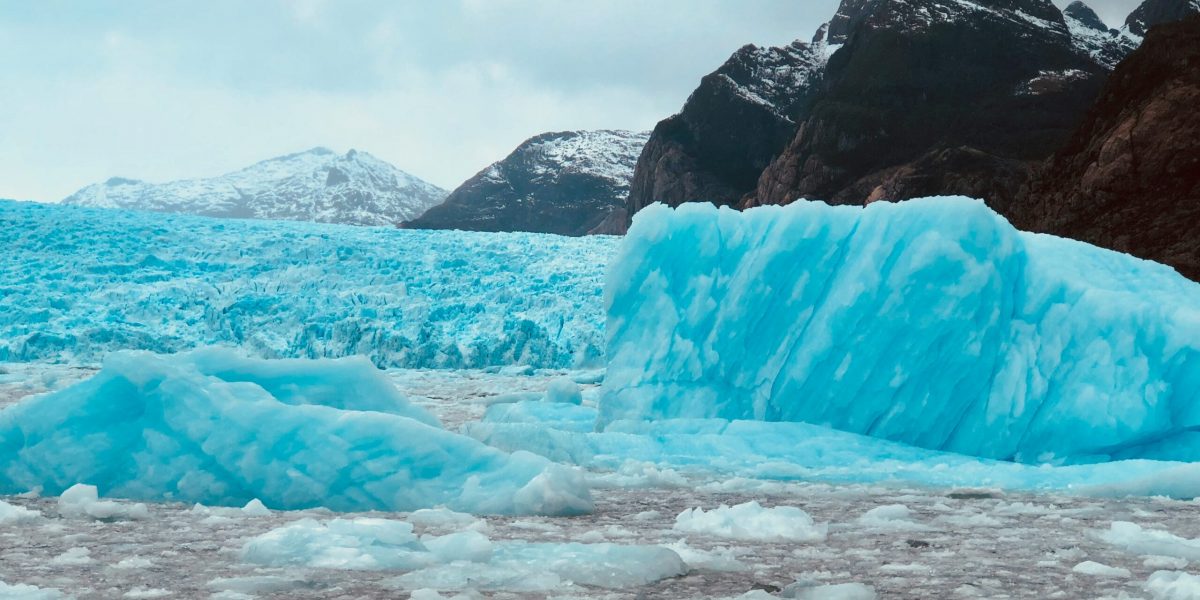The phenomenon of rising sea levels is one of the most alarming consequences of climate change. This is primarily due to the melting of glaciers and polar ice caps, which has been accelerated by global warming. As these massive ice structures diminish, the water they release flows into the world’s oceans, causing sea levels to rise. This poses a significant threat to coastal areas around the globe, impacting millions of lives and ecosystems.
Understanding the Science Behind Sea-Level Rise
Rising sea levels are driven by two main factors related to climate change. The first is the thermal expansion of seawater. As the Earth’s temperature increases, seawater warms and expands, contributing to higher sea levels. The second factor is the melting of land-based ice, including glaciers and ice caps in regions such as Greenland and Antarctica. When this ice melts, it adds a substantial amount of water to the oceans.
Glaciers and polar ice caps act as vast reservoirs of freshwater. These ice formations have been relatively stable for thousands of years, but recent temperature increases have led to their accelerated melting. For instance, studies have shown that Greenland’s ice sheet is losing ice at an unprecedented rate, contributing significantly to global sea-level rise. Similarly, the Antarctic ice sheet, which contains about 60% of the world’s freshwater, is also experiencing increased melting.
The Consequences of Rising Sea Levels
The rise in sea levels poses numerous threats to coastal regions. One of the most immediate concerns is the increased risk of flooding. Coastal communities are particularly vulnerable to storm surges, which are exacerbated by higher sea levels. These surges can lead to extensive property damage, loss of life, and displacement of populations. In some cases, entire communities may need to relocate, a process known as managed retreat, which is both costly and complex.
Erosion is another significant consequence of rising sea levels. Higher water levels lead to more powerful and frequent wave action, which can erode beaches and coastal infrastructure. This process not only threatens homes and businesses but also destroys natural habitats such as mangroves and salt marshes that provide critical ecosystem services, including protection from storms and support for biodiversity.
Saltwater intrusion into freshwater systems is also a growing concern. As sea levels rise, saltwater can encroach into rivers, estuaries, and aquifers that provide drinking water and irrigation for agriculture. This can lead to the salinization of water supplies, making them unsuitable for human consumption and crop production. Coastal ecosystems, such as wetlands and estuaries, are particularly vulnerable to changes in salinity, which can disrupt the species that depend on these environments.
Impact on Human Populations
The human impact of rising sea levels is profound. Coastal areas are often densely populated, and many of the world’s largest cities, such as New York, Tokyo, and Mumbai, are located along coastlines. These urban areas face significant risks from flooding and storm surges, which can lead to economic losses, infrastructure damage, and public health crises.
Displacement of communities is a critical issue. As sea levels continue to rise, some areas may become uninhabitable, forcing people to move. This displacement can lead to social and economic challenges, including the loss of livelihoods, cultural heritage, and community cohesion. The relocation of populations also places pressure on inland areas, which may not have the infrastructure or resources to support an influx of people.
Environmental Impacts
The environmental impacts of rising sea levels extend beyond human communities. Coastal ecosystems, including wetlands, coral reefs, and mangroves, are particularly sensitive to changes in sea level. These ecosystems provide vital services, such as protecting shorelines from erosion, supporting fisheries, and sequestering carbon. The loss of these habitats can have cascading effects on biodiversity and ecosystem function.
Coral reefs are highly vulnerable to the combined effects of rising sea levels and ocean warming. As sea levels rise, the increased depth of water can reduce the amount of sunlight that reaches the corals, affecting their ability to photosynthesize and grow. Additionally, warmer ocean temperatures can lead to coral bleaching, where corals expel the symbiotic algae that provide them with energy, resulting in weakened and dying reefs.
Mitigation and Adaptation Strategies
Addressing the challenges posed by rising sea levels requires a combination of mitigation and adaptation strategies. Mitigation efforts focus on reducing greenhouse gas emissions to slow the rate of global warming and, consequently, the melting of glaciers and ice caps. This can be achieved through the transition to renewable energy sources, improving energy efficiency, and implementing policies to reduce carbon emissions.
Adaptation strategies aim to manage the impacts of sea-level rise and protect vulnerable communities and ecosystems. One approach is to build or enhance coastal defenses, such as sea walls, levees, and storm surge barriers, to protect against flooding and erosion. Restoring and conserving natural barriers, such as wetlands and mangroves, can also provide a buffer against rising waters while supporting biodiversity.
Implementing managed retreat plans is another adaptation strategy. This involves relocating infrastructure and communities away from vulnerable coastal areas to safer locations. While this approach can be challenging and costly, it may be necessary in areas where other protective measures are insufficient or impractical.
The Role of Policy and Governance
Effective policy and governance are crucial in addressing the impacts of sea-level rise. Governments at all levels must collaborate to develop and implement strategies that protect communities and ecosystems. This includes investing in research and monitoring to better understand sea-level trends and their impacts, as well as developing comprehensive planning frameworks that integrate climate risk into land-use and development decisions.
International cooperation is also essential, as sea-level rise is a global issue that requires coordinated efforts. Sharing knowledge, technology, and resources can help countries, particularly those with fewer resources, to adapt to the changing climate and protect their populations and environments.
The Importance of Public Awareness and Education
Raising public awareness and education about sea-level rise and its impacts is vital for fostering a proactive response. Communities need to understand the risks they face and the measures they can take to protect themselves. Educational programs, public outreach, and community engagement initiatives can empower individuals and communities to take action and advocate for policies that address the causes and consequences of rising sea levels.
The melting of glaciers and polar ice caps is a significant driver of rising sea levels, posing a serious threat to coastal areas around the world. The impacts are far-reaching, affecting human populations, economies, and ecosystems. Addressing these challenges requires a comprehensive approach that includes mitigation, adaptation, effective governance, and public engagement. By taking action now, we can mitigate the risks and protect vulnerable communities and environments from the consequences of a changing climate.















